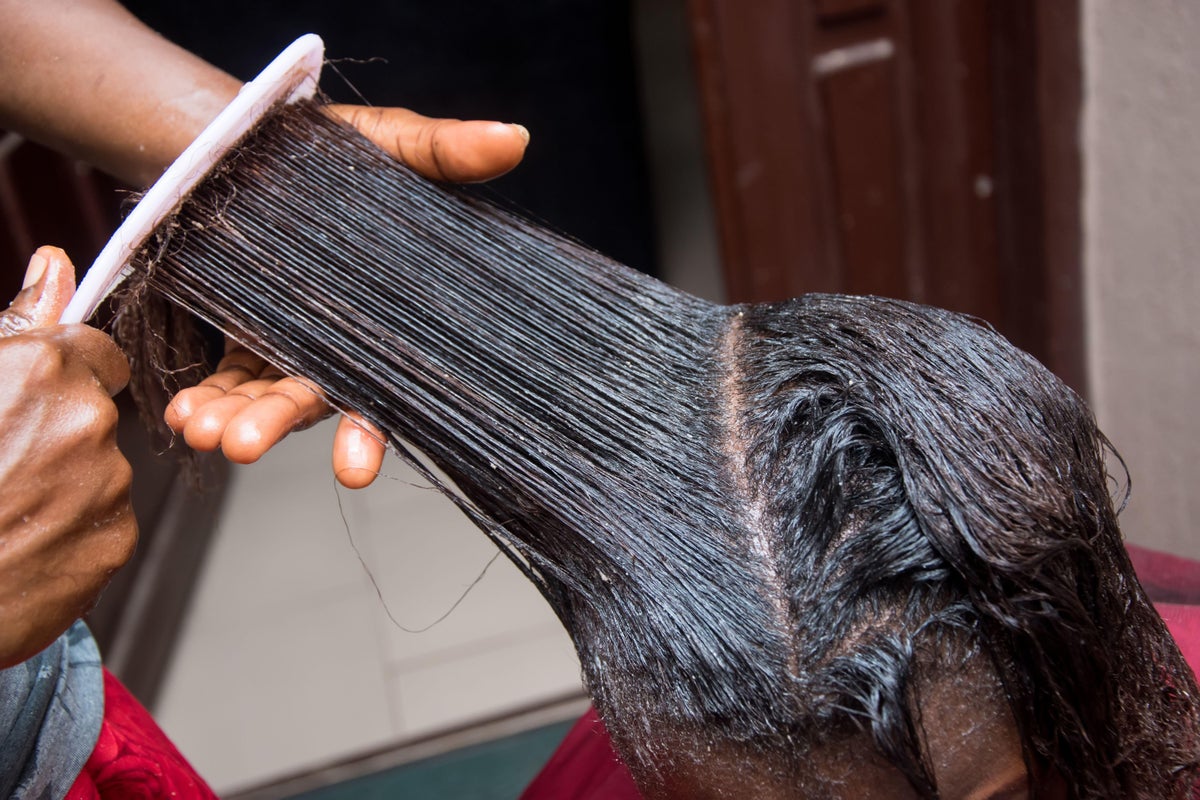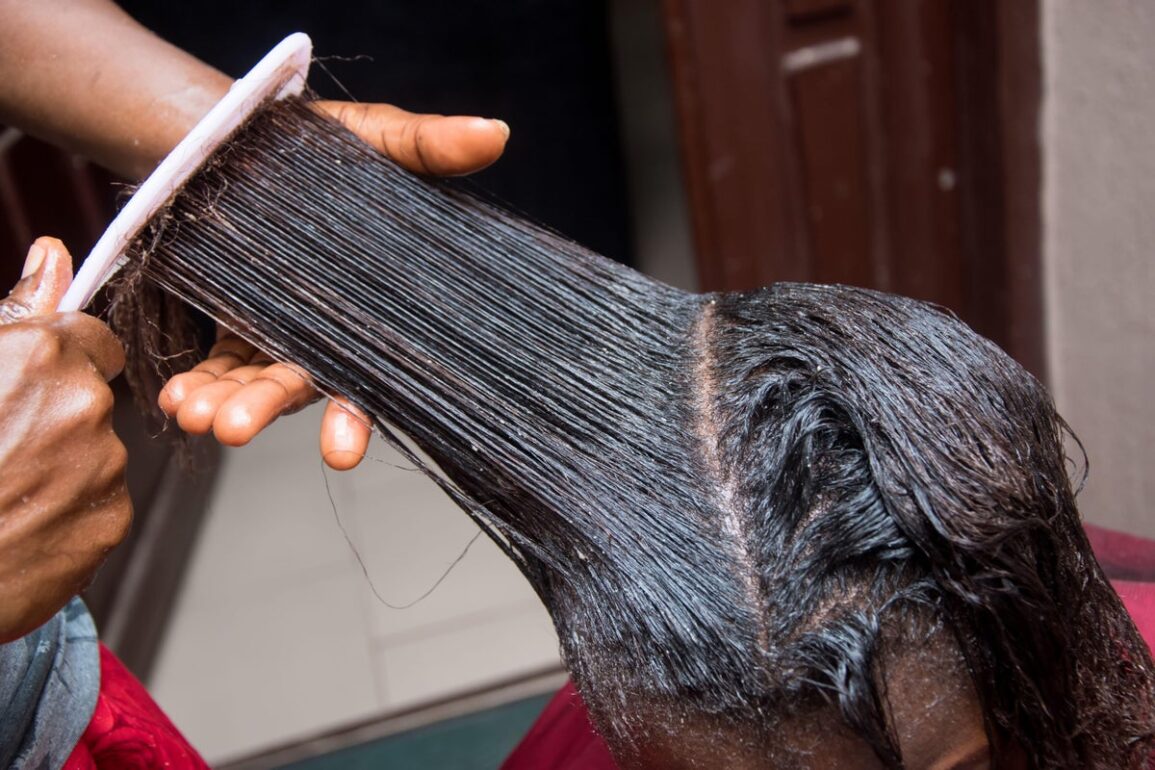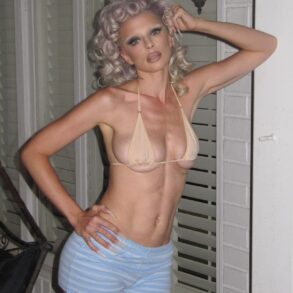
I was in fourth grade when I got my hair relaxed for the first time. My mom took me to a professional salon, and Game Boy in hand, I sat in the chair, nervous but excited. My mom and sometimes other relatives had always braided my hair at home, and now, at age nine, I wanted straight hair. The hairdresser took out my long braids, washed my hair, and then applied a thick white cream that looked like my dad’s shaving cream.
Within seconds, it began to burn, a lot. I clenched my teeth, bearing the searing pain in my scalp because that was what it would take to get the silky, straight hair I coveted.
My natural hair was long and soft, but somehow, I had gotten the message early on that it was inadequate. I knew, even then, that the pressure I felt to straighten my hair was rooted in white supremacy, but I didn’t have the words to name it yet, let alone the wherewithal to fight it.
I got the straight hair I wanted, but only temporarily. My healthy, thick, long hair began to thin and break off. It took several years to get it healthy. I never relaxed my hair again and now I have learned that relaxers can cause hair loss, pain and scalp inflammation.
The announcement that the Food and Drug Administration was proposing a ban on hair relaxers that contain formaldehyde and compounds that off-gas formaldehyde, brought back all these memories. Researchers are finding more and more evidence that formaldehyde causes health problems. As a Black woman and a physician, I think this proposed ban is reassuring. But safer beauty products are not enough to protect Black women. We need to end the anti-Black racism that pushes women to use those products in the first place.
While we can use flat irons to straighten our hair, this is temporary. Relaxers work by more permanently breaking the disulfide bonds that form between sulfur atoms found in keratin, a protein in hair strands The more disulfide bonds in the hair, the curlier it is. Relaxers help pull those sulfur atoms away from each other, so they can’t naturally rejoin. Typically, a stylist will keep the relaxer solution in the hair for 10 to 15 minutes and will use a comb to smooth the hair into a straight position. Then, they will rinse the relaxer out with hot water and add a neutralizing shampoo to stop the chemical reaction. This heat step breaks down the relaxer solution, releasing formaldehyde, a colorless gas, into the air.
Last year, one study found women who used formaldehyde hair straighteners at least four times a year doubled their risk of developing uterine cancer. Formaldehyde has long-term effects like asthma exacerbation and headaches and other short-term effects like nausea, dizziness and respiratory problems. More than 150 chemical hair-straightening products, such as keratin treatments or Brazilian blowouts, contain formaldehyde. Activists have also accused companies of hiding formaldehyde in their ingredient list.
Although the sales of chemical straighteners are declining, they are still a staple in Black hair salons. For many, going after straight hair is an ingrained reaction to the dehumanizing way people have denigrated Black hair for centuries. There are accounts of white colonists likening the hair of African people to animal wool. And some enslaved people were forced to shave their hair off in an effort to strip them of their African cultures. In Louisiana, the racist tignon law forced Black women to cover their natural hairstyles in head wraps to mark them as members of the enslaved class but also to quell the desires of white men.
The racist pressures to conform to whiteness have plagued Black Americans throughout history. Hair racism led to a landmark discrimination case, filed by Beverly Jenkins. A judge ruled in her favor, saying that Afro hairstyles would be protected under Title VII of Civil Rights Act, which outlaws workplace discrimination based on race, religion, sex or national identity. But Black people are still being penalized for their natural hair in their schools and occupations. This has led to two dozen states passing the CROWN act, a law that forbids workplace racism based on natural hair texture and protective hairstyles such as locs or braids. Researchers have found Black women with natural hairstyles are less likely to receive job interviews compared to white women or Black women with straightened hair.
When I applied for medical residency, I flat-ironed my hair straight; I was afraid that the people deciding my future would focus on my natural curls instead of my natural abilities as a physician. I got into my top choice of residency programs, but that didn’t stop my hair from being the topic of conversation. A non-Black supervisor, seeing my natural curls, called them “fun.” She likened them to feeling she was “vacationing in the Caribbean.” Therein lies the challenge: succumb to Eurocentric standards of beauty to be considered professional, while at the same time endangering my health to meet those standards. This kind of attention has taken its toll on my mental health, and that of many of my patients.
Once, my friend’s daughter, who attended a predominantly white kindergarten, came home upset. “I wish I had straight hair,” she told us “Then I would be pretty.” She had lovely, voluminous coiled hair, but she started asking her mom to straighten it. There is mounting evidence that even in children, experiences of anti-Black racism, such as those targeting Afro-textured hair, can result in depressive symptoms, even suicidality.
I am relieved that formaldehyde-containing relaxers may be taken off the market, but if the goal is to protect the health of Black women and girls, then they must be able to safely wear their natural hair without negative messaging and penalties. Schools need to be mindful of racist comments about Afro-textured hair. Reporting systems should hold individuals accountable for anti-Black racist behaviors targeting Black hairstyles. The CROWN Act should be federal, not just state, legislation. Black children and adults should never fear losing their jobs, school placements or health because of their natural hair.
This is an opinion and analysis article, and the views expressed by the author or authors are not necessarily those of Scientific American.
This post was originally published on this site be sure to check out more of their content.









